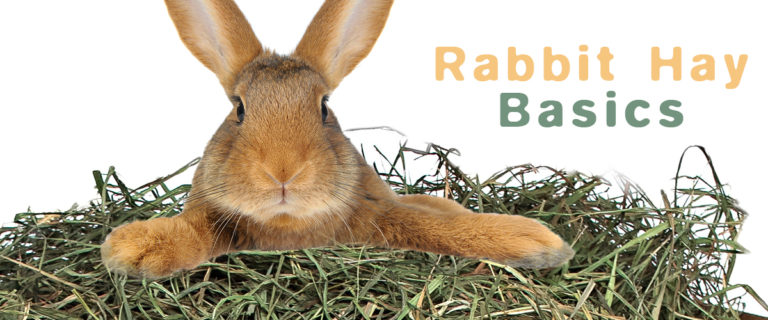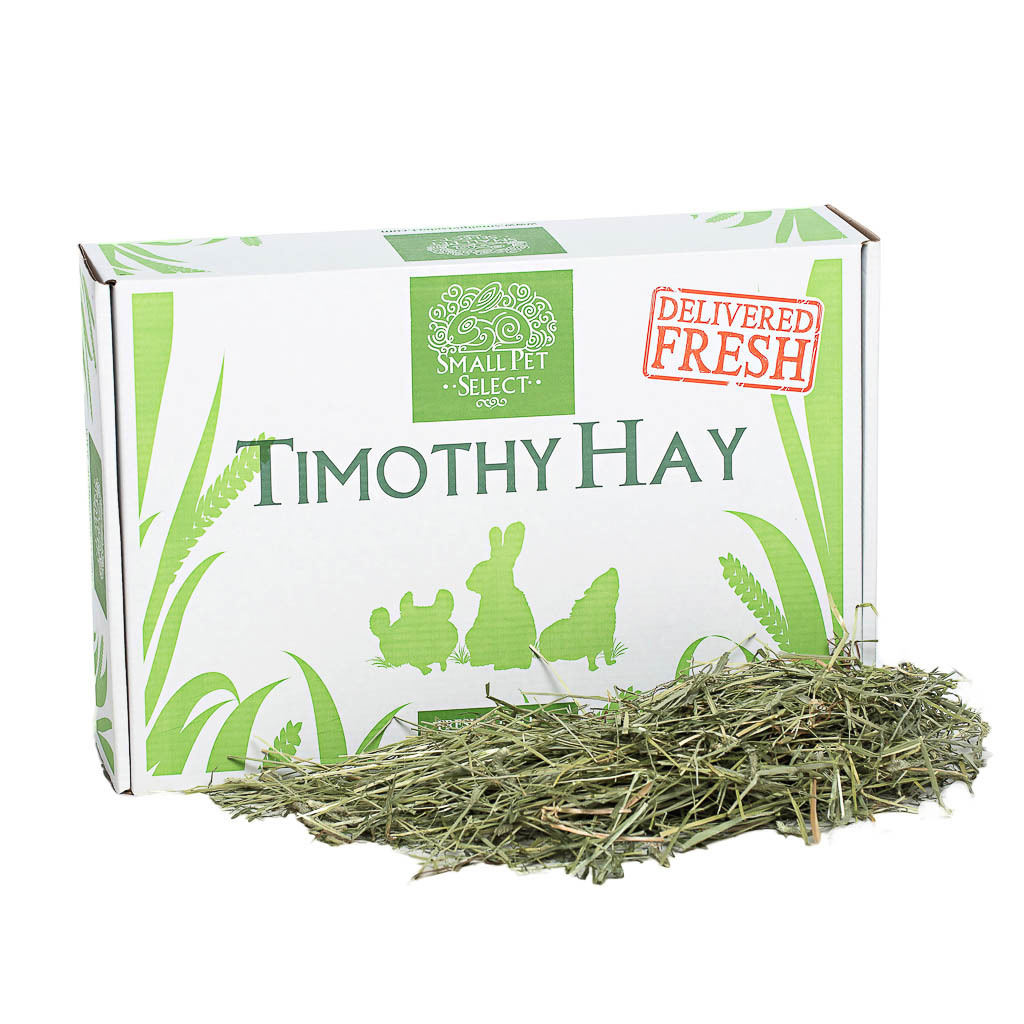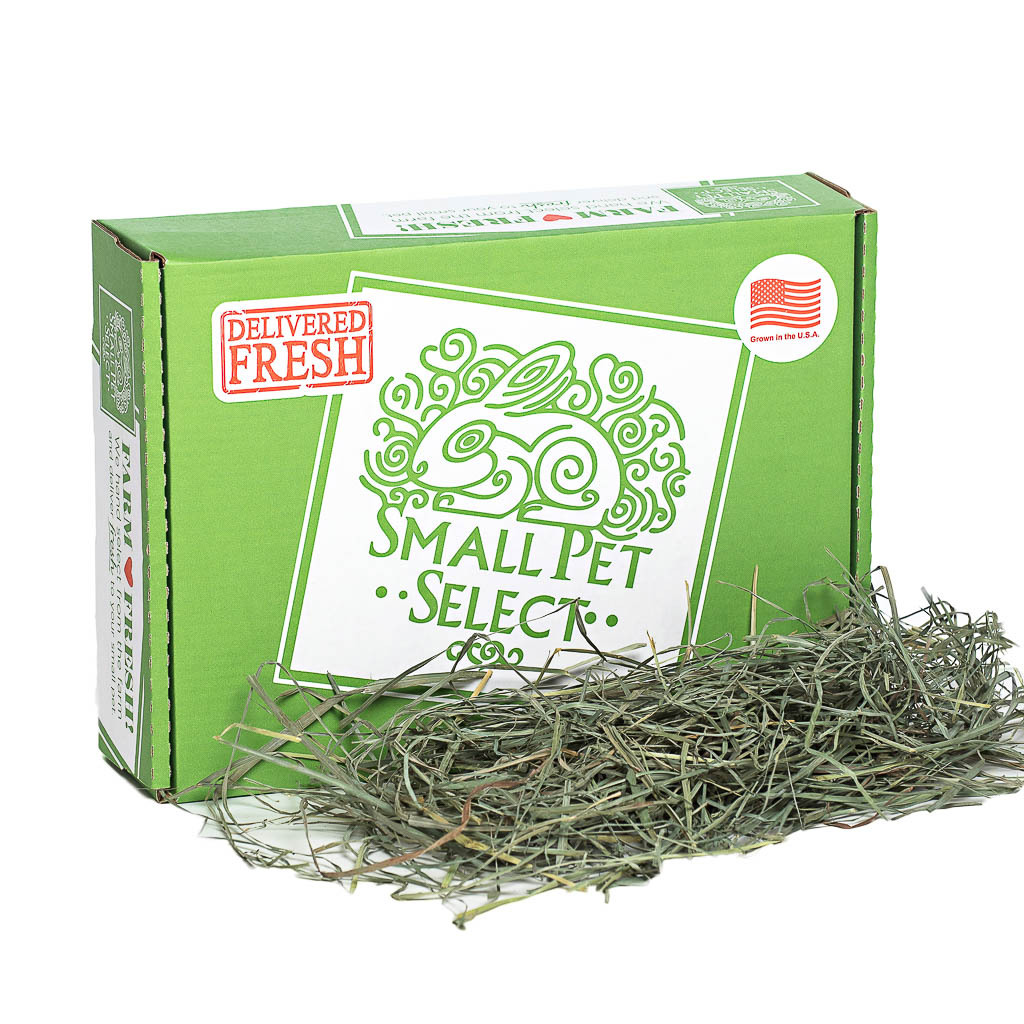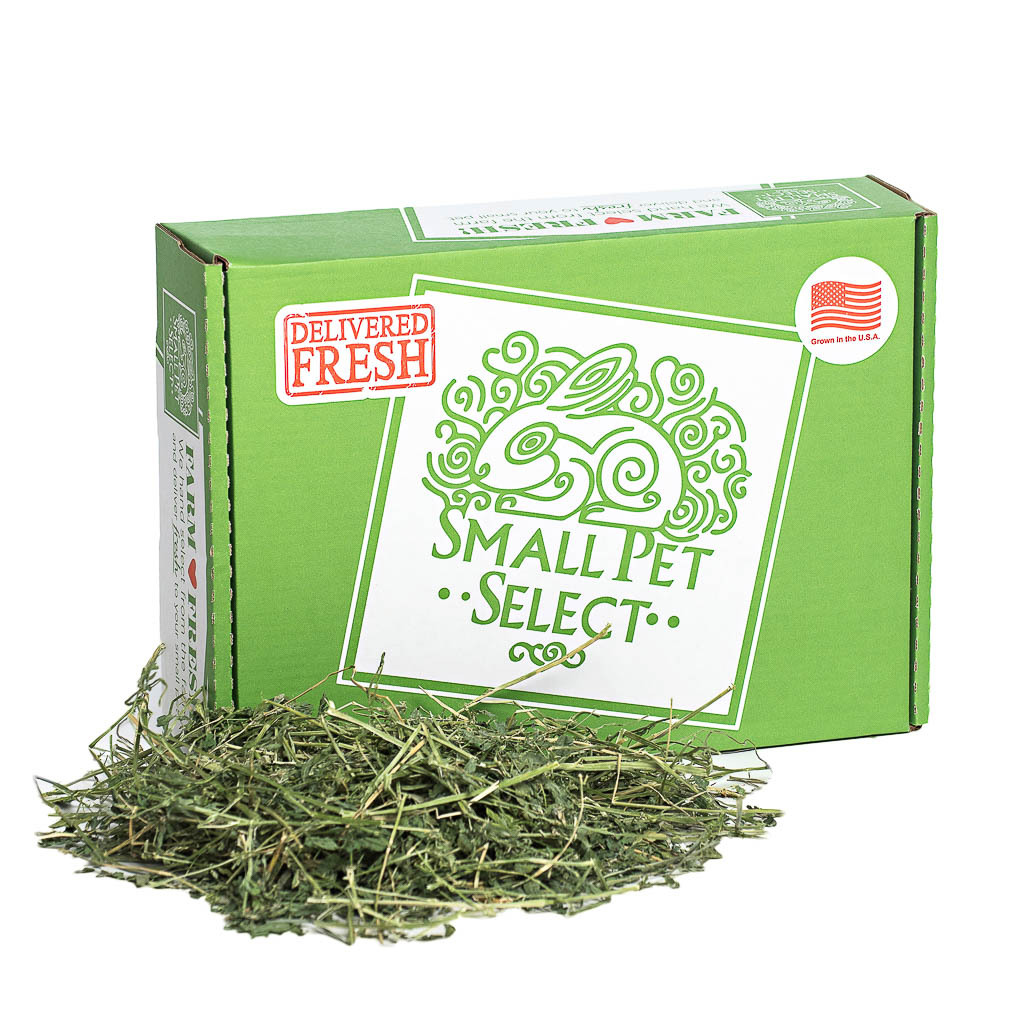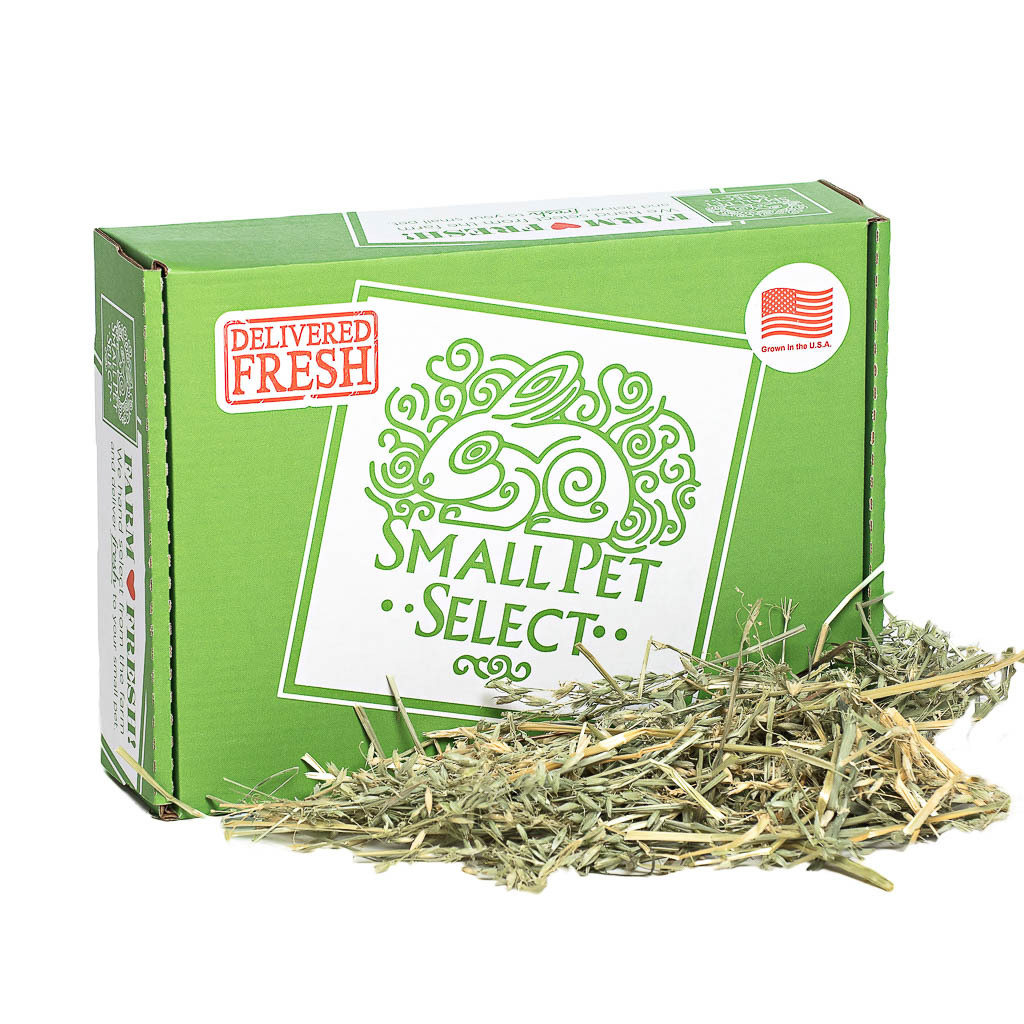The world of bunnies. They’re playful, intelligent, very curious, and very good looking. Wow, kinda sounds like me! They make awesome companion animals, so if you’re lucky enough to welcome a rabbit unto your life, congrats! With the right supplies (proper habitat and balanced diet made up of lots of rabbit hay), you and your bunny will be on your way to a BFF relationship in the years ahead.
Your Bunny's Diet is SUPER Important
Can you believe that these little sweethearts used to be considered “throwaway” animals? So, so many were bred and purchased, only to be put in a cage or rabbit hutch. Not given any love or attention that they so deserved, let alone the exercise and proper diet of rabbit hay they deserved. Heartbreaking. But, there’s good news! We’re seeing a HUGE emphasis on bunny health and nutrition in our awesome veterinarian community. And we’re so giddy about it!
Animal experts and advocates are starting to talk about why rabbits are such wonderful small animals. One of the most important topics we’re hearing a lot about? A rabbit’s diet… yes!!!
A bunny’s diet is so important (cannot emphasize this enough). An ideal diet should be made up of mostly rabbit hay (80%ish), veggies, some nutritious treats, and pellets as a supplemental food.
So let’s hop to it! What do you need to know about feeding your bunny?
What's So Special About Rabbit Hay?
We know this sounds pretty obvious, but we’ll say it anyway: rabbits absolutely need hay 24/7; their lives depend on it. It’s the honest truth, and here’s why…
Digestion and Stasis
Like other small animals, hay is a vital part of a rabbit’s diet. In fact, it’s so important, that 80% of what your bun is eating should be fresh, quality rabbit hay. And what if they don’t have 24/7 access to hay? Well, there’s the possibility of digestion and stasis: a serious and potentially life-threatening medical condition where the digestive system slows down, and in some cases, stops all together.
Rabbits have very complex digestive systems, and in order to keep things moving along, balance important gut flora, and prevent blockages in the gastrointestinal tract, they need hay. All of the time.
Stasis can be deadly and your bunny’s GI tract can stop working properly for a variety of reasons. Stress, dehydration, pain from another infection, an intestinal blockage, or a lack of fiber are all common causes. If this vital system stops doing its job of absorbing nutrition and moving everything along, there are serious issues. Food, rabbit fur, etc… these things can get stuck, and when a rabbit is clogged up with junk, it causes bacterial overgrowth, painful gas and bloating.
If your bun hasn’t eaten, you see small or malformed fecal droppings, or they’re lethargic, call your exotic vet IMMEDIATELY.
But there’s good news! When bunnies have enough rabbit hay to eat, the fiber keeps the digestive system moving along, and in most cases keeps teeth healthy and filed down. Rabbit hay is a tool to be used to PREVENT health disasters.
Bunny Teeth
Bunny teeth (cuteness overload). A rabbit actually has 28 teeth, but we usually only get a peek of the two chompers (incisors) in front. A bunny’s teeth continually grow over their lives. And since these animals are plant-lovin’ herbivores, it’s no wonder they have a mouthful of teeth.
In the wild, rabbits love to forage and graze for their food, and we should encourage this behavior in the home, too. They need those teeth to chew on sticks, bark, stems, roots and other roughage.
Rabbit hay helps buns satisfy the natural urge to chew, but also encourages their love of foraging and grazing. And with all that hay-munching going on, those teeth will wear down… we want that!
The Case for Calcium
Unlike other animals, rabbits can’t get rid of excess calcium through their poop. Instead, they expel any extra through their kidneys (renal system). If a bunny gets too much calcium from foods (alfalfa hay or too many pellets), it can cause serious problems: kidney stones, bladder stones, and bladder sludge (thickening of the urine).
Rather than feeding high calcium foods, switch to a lower calcium rabbit hay: orchard, Timothy, or oat. Also try adding some low calcium greens.
And always, always, monitor behavior. Changes in bowl movements, lethargy, or turning their nose up at food or water are all indicators that you need to call your vet. Right away. Bunnies are super good at hiding when they’re ill, so make sure you keep watching for anything abnormal.
How Much and What Type of Rabbit Hay Should I be Feeding My Bunny?
Every bunny is different and has unique dietary needs. Babies, young adults, adults and seniors all require different diets. Understandably. I mean, I’m an adult and no longer like baby food and Gerber puffs. Ya know?
There are different types of rabbit hay. At Small Pet Select, you’ll find grass hay (Timothy, orchard), and legume (alfalfa, oat). All of these are acceptable to feed, but you need to know which is best for their current need.
Timothy
Whether 1st, 2nd or 3rd cutting Timothy hay, it can be introduced to your bunny within the first year and used throughout their life. But, each cut is different and has its own nutritional profile.
- 1st cutting Timothy hay is high in stem and low in leaf, so it has a high fiber content to keep things moving smoothly through the digestive system. Low in protein and fat.
- 2nd cutting Timothy hay has the perfect nutritional profile for rabbits, so it’s really considered the golden standard. It’s soft with a flexible stem, medium leaf, and balanced levels of fiber, protein and fat. A GREAT every day rabbit hay.
- 3rd cutting Timothy hay is super soft, green, and has tons of leaf. Because it’s easy to chew, it’s ideal for rabbits recovering from tooth pain. Because it’s low in fiber and high in protein and fat, it's a great cut for those skinny little buns who need to put on a pound.
Orchard
Orchard: the perfect rabbit hay if you’re looking to encourage hay eating, and a fantastic alternative for bunnies who may be allergic to Timothy hay. It’s more of a treat hay, so it’s a welcome addition to any rabbits diet if they need a little re-boot.
Alfalfa
Alfalfa is rich and dense with lots of leaf. Because of it’s high fiber, protein and fat content, it’s perfect for those year-one-and-under buns. It’s best, though, to taper off at the one-year mark. At this time, you can introduce other hay and incorporate more fruits and veggies into the diet. And, it can also be used as a treat hay for older rabbits to spark some interest in their regular diet. Caution: use sparingly! They’ll gain weight!
Oat
Rabbits get the zoomies for oat. The super yummy taste makes for a great treat hay. Because of the high fiber content, it’s perfect for bunnies who need some roughage in their diet, but turn their cute little noses up at 1st cutting Timothy. Oat is more yellowish in color, and high in fiber, protein and fat.
Hay nutrients are influenced by so many things. Good rabbit hay doesn’t just depend on type, but on WHEN and WHERE the crop was harvested. Remember, there are no guarantees that a crop will be as good the following year. That’s why, at Small Pet Select, we’re constantly in search of the best cuts for our customers and their small animals.
No matter what type you feed your rabbit, they need fine, soft, fresh hay as part of their diet. ALWAYS. Fun fact: your rabbit should be eating a pile of compact hay about the size of their body. Every. Single. Day. So, a six pound bun will go through about ten pounds of hay… per month!
When Hay Boredom Sets In
It’s gonna happen. We promise. Your rabbit will get bored of their diet and need a little spice in their life. Try sprinkling a little orchard, alfalfa, or gourmet hay onto their regular hay. If that doesn’t work, try some of our herbal blends. Bunnies love these flowery mixes and they add of pop of color, which is always a plus. You can try Belinda's Blend for extra, extra Belinda-approved goodness, too.
But What About Pellets?
Pellets are way overused. If you’re providing a diet rich in rabbit hay and fresh greens, there’s no need for them.
But, if your bunny just loves their pellets, make sure they’re high-quality Timothy-based. (Alfalfa pellets should only be used for babies.) Pellets should account for the smallest part of the diet. You can feed 1/8 cup for a medium-sized rabbit once per day. If you notice your bunny isn’t eating as much hay, cut back on the pellets.
Seriously, ya’ll, please, please stay away from junky pet store pellets. They’re packed with unsafe ingredients and can cause obesity. The mixes may look appealing, but they don’t have the nutrients your rabbit deserves. And needs.
A Word on Water and Housekeeping
Bunnies need a clean space to live. It’s vital. So, make sure to remove old food or hay from their habitat often. NEVER feed food or hay that’s wet or smells moldy. And while this is hopefully obvious, a rabbit should always have access to fresh water in a clean suspension bottle. They’re no different than humans; they’ll become dehydrated if they can’t drink. And that’s not good for anyone.
You Got This, Bunny Parents!
The joy of having a bunny as a part of the family is indescribable. However… remember. Even though bunnies are small, they require lots of time, love and patience. They have complex needs and digestive systems, and these things require the right housing and the right diet.
If you’re in it for the long haul and are ready to commit to caring for a bunny their whole life… welcome to the family! These basics will help get you off to a great start with your new guy or gal.
Check out our bunny starter pack if you feel ready to take the plunge!



